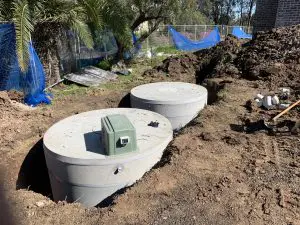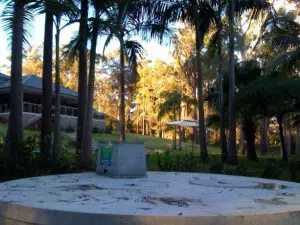Choosing the Right Septic System Design for you
If you’re a homeowner in any regional area, you know that this bustling metropolis isn’t just about urban living; it encompasses a diverse range of landscapes. From the inner-city suburbs to the coastal areas and semi-rural outskirts, Sydney’s topography varies dramatically. This diversity requires careful consideration when it comes to choosing the right septic system design. In this comprehensive guide, we’ll walk you through everything you need to know about selecting the ideal septic system for your specific Sydney landscape.
Understanding your regions landscape
Before diving into the specifics of septic system design, it’s crucial to recognize the unique landscapes that Sydney encompasses:
Inner-City Suburbs: These areas are characterized by compact lots and dense urban development.
Coastal Zones: Coastal suburbs boast stunning views but often deal with high water tables and sandy soils.
Semi-Rural Areas: Further away from the city, properties tend to have more space but may encounter sloping terrain and clay-rich soils.

Each of these landscapes presents its own set of challenges and opportunities when it comes to septic system design.
Factors to Consider
When selecting a septic system design for your Sydney property, take the following factors into account:
Soil Type:
Inner-City: Compact lots often mean less space for extensive drainfields. Consider systems like aerobic treatment units (ATUs) that can handle smaller areas.
Coastal: Sandy soils don’t retain water well, so systems with better water treatment and filtration may be necessary.
Semi-Rural: Clay-rich soils might require specialized drainage systems to prevent waterlogging.
Lot Size:
Inner-City: Limited space may necessitate innovative, compact designs.
Coastal: Larger properties along the coast may have more flexibility for traditional septic systems with adequate space for drainfields.
Semi-Rural: More spacious properties offer greater flexibility for conventional systems.
Water Table:
Inner-City: High water tables may require above-ground systems.
Coastal: Coastal areas often contend with fluctuating water tables, making raised drainfields or alternative systems a wise choice.
Semi-Rural: Understanding water table fluctuations is essential to avoid problems with your septic system.
Sloping Terrain:
Inner-City: Steep terrain can be challenging; consider systems that can adapt to these conditions.
Coastal: Proper siting and engineering are critical to prevent erosion and ensure system stability.
Semi-Rural: Terracing or retaining walls may be needed to accommodate a septic system.
Local Regulations:
Sydney has strict regulations governing septic systems. Research the specific requirements for your area, as they can vary significantly.
Environmental Impact:
Always consider the environmental impact of your septic system. Sydney places a high value on sustainability, so explore eco-friendly options when possible.
System Options for Sydney’s Varied Landscapes
Now that we’ve covered the key factors to consider let’s explore some septic system options tailored to Sydney’s diverse landscapes:
Conventional Septic Systems:
Suitable for properties with ample space, relatively low water tables, and well-draining soils.Ideal for semi-rural areas where larger lots are common.
Aerobic Treatment Units (ATUs):
Effective in tight spaces found in inner-city suburbs.
Provide enhanced wastewater treatment in smaller areas.
Raised Bed Septic Systems:
Well-suited for coastal regions with high water tables.
Elevating the drainfield can prevent contamination of groundwater.
Mound Septic Systems:
Ideal for properties with inadequate soil depth or drainage capabilities.
Work well in areas with clay-rich soils.
Advanced Treatment Systems:
These systems offer superior water treatment and are a good choice for environmentally conscious homeowners.
Sand Filter Septic Systems:
Effective in areas with sandy soils, often found near the coast.
Provide excellent wastewater filtration.
Gravity Distribution Systems:
A cost-effective option for properties with gentle slopes.
Suitable for both coastal and semi-rural areas.
Pressure Distribution Systems:
Can be adapted to various landscapes and are efficient in ensuring even distribution of effluent.
Drip Irrigation Septic Systems:
Ideal for properties with challenging soils and limited space.
Effective in inner-city suburbs with compact lots.
Eco-Friendly Options:
Consider systems that incorporate advanced technologies to reduce environmental impact, such as nutrient removal systems and greywater recycling.
Consult with Local Experts
Selecting the right septic system for your Sydney property is a critical decision that should not be taken lightly. Consulting with local septic system experts who understand the unique characteristics of Sydney’s landscapes and the relevant regulations is essential. They can perform soil tests, assess your property, and recommend the most suitable system design tailored to your specific needs.
In conclusion, the diverse landscapes of Sydney require careful consideration when choosing a septic system design. By understanding your property’s unique characteristics and consulting with local experts, you can ensure that your septic system functions optimally, preserving both the environment and the value of your property. Sydney’s landscapes are as unique as its residents, and the right septic system design can help you make the most of your piece of this beautiful region.
For a Free Quote and Sizing on all Septic Tanks Made in Australia call the team at Eco-Septic on 1800 808 135
Related Posts
- Below-Ground Septic Tanks: Sydney’s Septic Solutions
- Home Sewage Treatment Plants: What They Are And How Do They Work?
- Understanding Septic Tanks: A Comprehensive Guide for Consumers
- What Are Domestic Wastewater Treatment Plants?
- How Many Years Is A Septic System Good For?
- Beyond the Tank: Unleashing the Potential of Treated Septic Water in Australia
- All You Need to Know About Septic Tanks in Sydney
- Pros and Cons of AWTS for Rural Homes: Is It the Right Choice?




